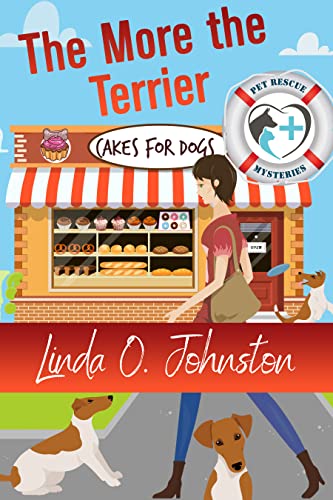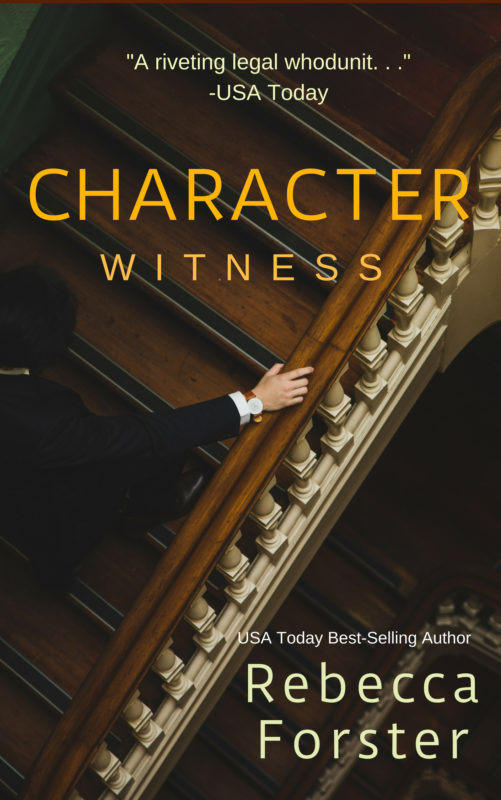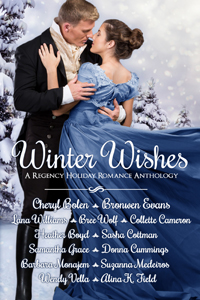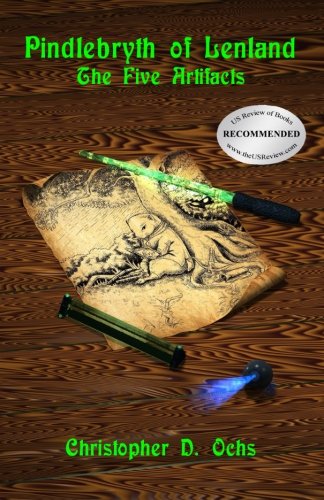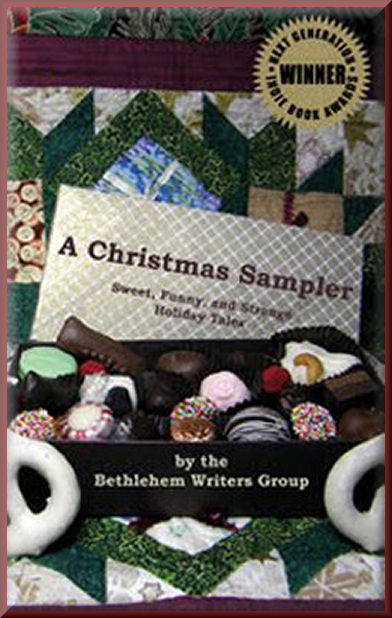Happy Virtual Holiday! by Carol L. Wright
December 13, 2021 by Bethlehem Writers Group in category Writing
Each year, until 2020, our writers’ group has enjoyed getting together toward the end of every year to simply enjoy food, games, and each other’s company. But of course, that hasn’t been possible during the pandemic. What’s more, several of our members have moved to be closer to family in other parts of the country since Covid-19 made it harder to travel.
Fortunately, technology has allowed our group to continue to hold our regular meetings virtually. There’s very little we cannot do on Zoom that we could do in person. We still read each other’s work and offer critiques. We still root for each other as we submit our work. We still plan group projects and publish our quarterly literary journal, Bethlehem Writers Roundtable. We still run our annual Short Story Award competition. (In fact, our 2022 contest opens on January 1 with the theme “An Element of Mystery.” Get your stories of 2000 words or fewer ready to win cash and publication.)
But these are all things we can do from our separate locations without having to be face-to-face. Can we really have a fun holiday party that way? How would we play games? How could we exchange gifts?
There’s a reason holiday parties are so popular. Neighbors, businesses, and yes, writers’ groups have them for much the same reasons. They are a way of marking the progress of time. Another year has passed, and we can take a moment to sit back and relax, socialize, and reflect on all we have accomplished over the past twelve months. Friendship, loyalty, and trust are important for productive and fruitful relationships, and each is enhanced by having social relationships—not just work relationships. We rejoice with each other when things go well, help each other where we can, and care for each other during the tougher days when just being there is all we can do.
So, this year, we’re going to have our holiday party again—despite being spread over eight states and four time zones. How? you ask. Well, we’ve figured out a way.
We will meet on Zoom, but each wear our party clothes—or ugly sweaters—and instead of bringing food to share, we’ll bring snacks to enjoy.
We have traditionally had a game or two at our parties. One has usually been a trivia game, but that’s hard in a virtual setting. Fortunately, I found a PowerPoint or Google Slides template for a Jeopardy-style game at: https://www.slidescarnival.com/jeopardy-free-presentation-template/11277. You can easily create the categories that are right for your group. A reading group might want questions about literature—or even the books read over the previous year. A writers’ group might have columns such as Grammar Goofs or Copyeditor’s Marks. A knitters’ group could include Tell Me a Yarn. (Actually, a storytellers’ group could do that, too.) For a group with members who observe many different holidays this time of year, there can be a category for each one. All the emcee needs to do is run an internet search for trivia about needlework or grammar or Shakespeare or Kwanzaa and write the questions. Then, with a shared screen, everyone should have a chance to play along. No buzzers—especially for a large group, but each person who comes up with the right “question” can credit themselves with the appropriate number of points. Then whoever amasses the most points can win the honor of going first in the gift exchange. (Here’s where that mutual trust thing kicks in.)
The most problematic aspect of a virtual party, of course is a long-distance gift exchange. In other years we did a round-robin exchange where each memer drew a number from a hat. The one with #1 selects a gift from the pile and opens it. Then #2 goes next and has the option of taking the gift #1 opened or opening a new one. If #2 takes the first gift, #1 gets to open a new gift. Then #3 can steal either of the opened gifts or unwrap one that is still in the pile. And so on. Then, after everyone has a gift, #1 has a last chance to swap with anyone they choose. It’s nice being #1.
Well, with no central location, no pile of gifts, this year we’re not only randomly handing out numbers, each gift is assigned a letter. This year, we lowered the total value of the gifts for the exchange to allow us to ship items to each other without it all costing more than previous years.
Our party is tomorrow, and we hope it will be a worthy substitute for our prior celebrations—just as we hope, whether you’re able to come together in person or just virtually with your friends, colleagues, and family, that you and yours have a festive and healthy holiday season and a productive and happy new year.

Carol L. Wright escaped a career in law and academia for one in writing. She loves creating her Gracie McIntyre mysteries where, unlike in life, justice always prevails. The first in the series, DEATH IN GLENVILLE FALLS, was a finalist for both a 2018 Killer Nashville Silver Falchion Award and a 2018 Next Generation Indie Book Award. She also writes short stories in many genres that have been published in a variety of literary journals and award-winning anthologies. She has compiled some of her favorites in A CHRISTMAS ON NANTUCKET and other stories, published in 2019. To find out more , visit her website at: http://CarolLWright.com.
Step Back in Time Podcast with The Lost Girl in Paris by Jina Bacarr
December 11, 2021 by Jina Bacarr in category Jina’s Book Chat, WritingMadame de Cadieux has stepped back in time!
THE LOST GIRL IN PARIS is now available across all platforms.
Available in e-book, print and audio
The Lost Girl in Paris universal link: https://books2read.com/u/3LyrdN
It’s the story of woman who survived both Auschwitz and Dachau, but never spoke about it until she meets a young reporter named Emma Keane who touches a nerve in her that now is the time to speak about those times. Her memories are as vivid to this eighty-year-old as if she were the seventeen-year-old girl who ran away to Paris to become a parfumier after losing her mother to the Nazi war machine.
I was privileged to be on a panel with Boldwood BHooks authors Lizzie Lane and Rosie Clarke — we talk about all things historical!
I wrote THE LOST GIRL IN PARIS to pay tribute to the strong women who survived the Holocaust and willingly shared their stories with us. The horror of Nazi brutality, the loss of family, their dignity… but also about their strength just to ‘survive another day’. And the strong bonds with their sisters-in-arms they formed with fellow prisoners. How they learned to trust each other and stood up against the enemy to save each other.
We must never forget.
——————-
Here is a short excerpt from THE LOST GIRL IN PARIS:
—————-

The Last Month of the Year by Linda O Johnston
December 6, 2021 by Linda O. Johnston in category Pets, Romance & Lots of Suspense by Linda O. Johnston tagged as December, ideas, Linda O. Johnston, Looking back, New Years
Yes, it’s December, the last month of the year. Where did the rest of the year go?
Have any of you started looking back? It’s early in December, yes, but it won’t be long before the new year starts.
What have you worked on this year? What have you accomplished? What haven’t you finished that you want to work on next year?
If you’re a writer, did you write what you set out to do? Did you come up with new ideas, and if so did you accomplish them, or at least start them?
If you’re a reader, did you read all the books you intended? Did you learn about new books or new authors you’d like to read, and if so have you read any of them?
In the rest of your life, did you have fun with family? Do you have more plans for the holiday season? Any ideas about next year?
Me? Well, I haven’t finished all I intended, but it’s been a good year for me. I had two new books published and have more to come in the next few years, some of which I’ve started writing and others I completed and am just waiting till their publication dates. I have a manuscript almost ready to send, and another one in which I’m part way through the first draft.
I had a good year in things besides writing. I saw family, had a fun Thanksgiving, made plans for some trips next year, and had fun with my husband and dog. We also lost one of our dogs, which is always so sad, but she was having health issues.
Next year? Well, I’ve started to consider it. How about you?
Some of Linda’s Books
Why Self-Publishing by Tracy Reed
December 5, 2021 by Tracy Reed in category Pink Pad by Tracy Reed tagged as Agents, Authors, Edgy Christian Fiction, self-publishing
Tracy is busy today. While she’s away, she thought you might like to read a post from our archives. Why Self-Publishing was originally published on Jan 16, 2015.
Why Did You Chose To Self-Publish?
This is the first question most Self-Published Authors are asked. However, what’s really going through the mind of the person asking is, “So you couldn’t get an agent or your work wasn’t up to snuff.” That’s so not true.
I’ve learned a lot on the road to becoming a self-published writer. First, I had an agent. A well-respected agent in the world of Christian Fiction. Let me preface this by saying, she knew my writing style. She’d read the first five chapters of my book. Actually, it was a different book. [That’s a story for another time.] She got my book to ‘Board.’ Two years later and I’m still waiting to hear if that publisher wants to move forward with my book. I think it’s safe to say, they passed on it.
I need to back up. I write what is classed as Edgy Christian Fiction. What is that you ask? ECF [Edgy Christian Fiction], is fiction with Christian themes. What makes it ‘Edgy’ is that it includes elements not common in traditional Inspirational or Christian fiction. In my books, that means the kisses are a little more passionate, there’s sex between the married couples, language with a little bite, lots of physical descriptions voiced by the characters, wine, talk about abortion, divorce, fornication, lust, not liking your in-laws and anything else that goes on in everyday life. The men are hot, the women are loaded with curves and both are quick to render their appreciation of the opposite sex.
As a Christian, I wanted to read stories about women who weren’t ashamed or embarrassed to express their feelings, with strong personalities and business owners. Let’s be real, when you’re sitting down with your girlfriends talking, you’re not talking in prose. No, you’re very descriptive in your comments on how amazing Idris Elba, Matthew McConaughey, Johnny Depp or Daniel Craig looked in their last movie. So why not write stories from that POV.
 I feel it’s a little difficult to convey to the reader the heroine’s attraction is to the hero by not being descriptive in this manner. Traditional Inspiration Fiction, the heroine’s feelings might be described with something like, ‘His thick black hair was beautiful blowing in the wind, brought a smile to her face.’ That’s nice, but in my world, it would have a little more umph, like, ‘She wondered how his thick black hair would feel brushing against her chin as he placed hot kisses along her neck.’ Or maybe, ‘When he kissed the back of her neck, she lost the ability to stand.” Statements like this aren’t necessarily acceptable CBA approved.
I feel it’s a little difficult to convey to the reader the heroine’s attraction is to the hero by not being descriptive in this manner. Traditional Inspiration Fiction, the heroine’s feelings might be described with something like, ‘His thick black hair was beautiful blowing in the wind, brought a smile to her face.’ That’s nice, but in my world, it would have a little more umph, like, ‘She wondered how his thick black hair would feel brushing against her chin as he placed hot kisses along her neck.’ Or maybe, ‘When he kissed the back of her neck, she lost the ability to stand.” Statements like this aren’t necessarily acceptable CBA approved.
In my GENERATIONAL CURSE, I wanted to tell a story about a man who never turned down a drink or a woman. But when he hit rock bottom, he went cold turkey and fell in love with God. His priorities changed and he refused to let anyone or anything destroy that relationship. The heroine, is the complete opposite. She hasn’t had a relationship with God since she was a child. And even then it was more forced. Now as an adult, the only part of marriage she wants, is a married lover. She has no desire to be with a single available man. In her mind, a married man is less complicated. But she is intrigued by the hero and he her.
In order to tell the story, I had to take the reader on a journey with the heroine. I had to show how complicated and empty her life was by detailing her relationship with her married lover. I’m sure the story could have been told without the sex, but I don’t think it would have had the same impact. I don’t want to give too much away, but in the end it all makes sense.
So Why Did I Choose To Self-Publish? I wanted to tell the stories I wanted to read. I met an agent at a conference and she gave me two options: tell the story with the sex and no God or tell the story with God and no sex.
I wrestled with that statement for quite a while. But, I felt God had given me a great platform and I refused to back down. Also, I wanted covers and titles that were a little racy, another thing not really permitted in Inspirational or Christian Fiction.
So here I am, a newbie writer taking a chance writing stories with a little heat and taboo subjects. I know my style of book isn’t for everyone and that’s fine. For those willing to read something a little different, I think they’ll enjoy it.
Funny thing, a few weeks after I published my book, I got a LinkedIn request from my former agent. I’m still deciding if I should accept it.
That’s why I chose to self-pub.
Books by Tracy Reed
History of Mail Order Christmas Catalogs by Will Zeilinger
December 3, 2021 by Janet Elizabeth Lynn and Will Zeilinger in category Partners in Crime by Janet Elizabeth Lynn & Will Zeilinger tagged as Christmas Catalogs, Christmas History, mail order, The Wish Book
Montgomery Ward was the first department store in the United States to offer a mail-order catalog in 1872.
The Sears-Roebuck general catalog of 1896 included wax candles for Christmas trees. They added Christmas cards in 1898. The first Christmas tree ornaments appeared in the Sears catalog in 1900. They began offering Christmas stockings and artificial Christmas trees in 1910. Electric Christmas tree lights made their debut in the catalog in 1912.
As the Sears-Roebuck mail-order catalog was already a regular part of America’s Christmas tradition, their Christmas catalog of 1933 started a tradition that made the “Wish Book,” as many customers affectionately called it, an American icon, The Wish Book name became synonymous with the annual Christmas Book catalog.

The first Sears-Roebuck Christmas Book catalog cover illustrated some of the featured items in the catalog, including the “Miss Pigtails” doll, an electric (battery-powered) toy automobile, a Mickey Mouse watch, fruitcakes, Lionel electric trains, a five-pound box of chocolates, and live singing canaries.
Sears started a tradition of putting colorful, warm Christmas scenes on the cover of their Christmas catalog and regularly showed children, Santa Claus, and Christmas trees.
Many people nostalgically think of the Wish Book as filled with nothing but toys. But, over the years, more pages were devoted to gifts for adults than toys for children.
Finally, in 1968, Sears made it official by renaming the Christmas Book catalog “The Wish Book.”
Over the years, many other stores followed suit with their own Christmas mail-order catalogs, including Montgomery Ward, Spiegel, Gimbels, J.C.Penney, W.T.Grant, Bon Marche, White’s, Western Auto, and of course, Neiman Marcus.
Neiman Marcus is famous now for high-end department stores and for publishing an annual catalog of the outrageous in Christmas gift-giving.
As far back as 1926, Neiman Marcus offered Holiday gift suggestions, but they were in the form of postcards to get customers into their retail stores. They produced an actual Holiday catalog in the 1950s, and in 1959 Stanley Marcus invented the idea of including an outrageous holiday gift. The first took the form of a live Black Angus bull accompanied by a sterling silver barbecue cart. The standard catalog was changed to include the new, almost $2000 gift offering.
Neiman Marcus has since gained increased fame with some of its impossible and ostentatious gift products in the Christmas catalog. Although not specifically for children, maybe the children inside us, Neiman Marcus began offering “his and hers” gifts, like expensive cars, airplanes, and even vacations and yachts. In 1964, there were his and her hot air balloons, priced just under $7000 for both. The 1970 catalog featured reasonably a priced and readily available $10 oak tree. At the other end of the scale (at almost $600,000), there was a one-of-a-kind Noah’s ark, complete with matched pairs of animals. In 1975, one could get letters autographed by George and Martha Washington for around $8500. More recently (2005), they offered a private concert with Elton John for $1.5 million.
Affiliate Links
A Slice of Orange is an affiliate with some of the booksellers listed on this website, including Barnes & Nobel, Books A Million, iBooks, Kobo, and Smashwords. This means A Slice of Orange may earn a small advertising fee from sales made through the links used on this website. There are reminders of these affiliate links on the pages for individual books.
Search A Slice of Orange
Find a Column
Archives
Featured Books
THE MORE THE TERRIER
Is Lauren Vancouver's old mentor an animal hoarder?
More info →CHARACTER WITNESS
Kathleen Cotter, junior partner at a past-its-prime Beverly Hills law firm gets a doozy of a first case.
More info →WINTER WISHES: A REGENCY HOLIDAY ROMANCE ANTHOLOGY
Stories that will sweep you away . . .
More info →PINDLEBRYTH OF LENLAND: THE FIVE ARTIFACTS
Pindlebryth and Darothien struggle against betrayal, international intrigue, and an unseen puppet-master, as they race to follow a bewildering trail of ancient clues to locate the most powerful of the Artifacts.
More info →
A CHRISTMAS SAMPLER: Sweet, Funny, and Strange Holiday Tales
Winner of the 2010 Next Generation Indie Book Awards for Best Short Fiction and Best Anthology
More info →Newsletter
Contributing Authors
Search A Slice of Orange
Find a Column
Archives
Authors in the Bookstore
- A. E. Decker
- A. J. Scudiere
- A.J. Sidransky
- Abby Collette
- Alanna Lucus
- Albert Marrin
- Alice Duncan
- Alina K. Field
- Alison Green Myers
- Andi Lawrencovna
- Andrew C Raiford
- Angela Pryce
- Aviva Vaughn
- Barbara Ankrum
- Bethlehem Writers Group, LLC
- Carol L. Wright
- Celeste Barclay
- Christina Alexandra
- Christopher D. Ochs
- Claire Davon
- Claire Naden
- Courtnee Turner Hoyle
- Courtney Annicchiarico
- D. Lieber
- Daniel V. Meier Jr.
- Debra Dixon
- Debra H. Goldstein
- Debra Holland
- Dee Ann Palmer
- Denise M. Colby
- Diane Benefiel
- Diane Sismour
- Dianna Sinovic
- DT Krippene
- E.B. Dawson
- Emilie Dallaire
- Emily Brightwell
- Emily PW Murphy
- Fae Rowen
- Faith L. Justice
- Frances Amati
- Geralyn Corcillo
- Glynnis Campbell
- Greg Jolley
- H. O. Charles
- Jaclyn Roché
- Jacqueline Diamond
- Janet Lynn and Will Zeilinger
- Jeff Baird
- Jenna Barwin
- Jenne Kern
- Jennifer D. Bokal
- Jennifer Lyon
- Jerome W. McFadden
- Jill Piscitello
- Jina Bacarr
- Jo A. Hiestand
- Jodi Bogert
- Jolina Petersheim
- Jonathan Maberry
- Joy Allyson
- Judy Duarte
- Justin Murphy
- Justine Davis
- Kat Martin
- Kidd Wadsworth
- Kitty Bucholtz
- Kristy Tate
- Larry Deibert
- Larry Hamilton
- Laura Drake
- Laurie Stevens
- Leslie Knowles
- Li-Ying Lundquist
- Linda Carroll-Bradd
- Linda Lappin
- Linda McLaughlin
- Linda O. Johnston
- Lisa Preston
- Lolo Paige
- Loran Holt
- Lyssa Kay Adams
- Madeline Ash
- Margarita Engle
- Marguerite Quantaine
- Marianne H. Donley
- Mary Castillo
- Maureen Klovers
- Megan Haskell
- Melanie Waterbury
- Melisa Rivero
- Melissa Chambers
- Melodie Winawer
- Meriam Wilhelm
- Mikel J. Wilson
- Mindy Neff
- Monica McCabe
- Nancy Brashear
- Neetu Malik
- Nikki Prince
- Once Upon Anthologies
- Paula Gail Benson
- Penny Reid
- Peter Barbour
- Priscilla Oliveras
- R. H. Kohno
- Rachel Hailey
- Ralph Hieb
- Ramcy Diek
- Ransom Stephens
- Rebecca Forster
- Renae Wrich
- Roxy Matthews
- Ryder Hunte Clancy
- Sally Paradysz
- Sheila Colón-Bagley
- Simone de Muñoz
- Sophie Barnes
- Susan Squires
- T. D. Fox
- Tara C. Allred
- Tara Lain
- Tari Lynn Jewett
- Terri Osburn
- Tracy Reed
- Vera Jane Cook
- Vicki Crum
- Writing Something Romantic
Affiliate Links
A Slice of Orange is an affiliate with some of the booksellers listed on this website, including Barnes & Nobel, Books A Million, iBooks, Kobo, and Smashwords. This means A Slice of Orange may earn a small advertising fee from sales made through the links used on this website. There are reminders of these affiliate links on the pages for individual books.




























































